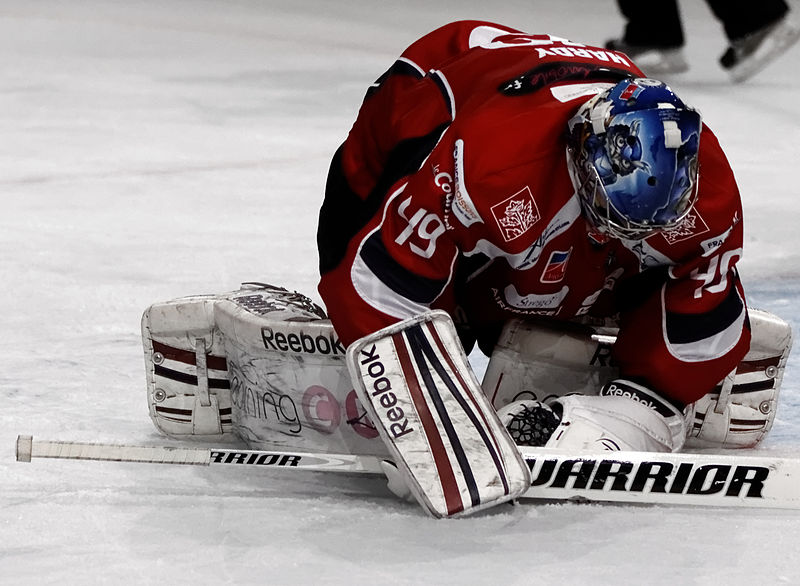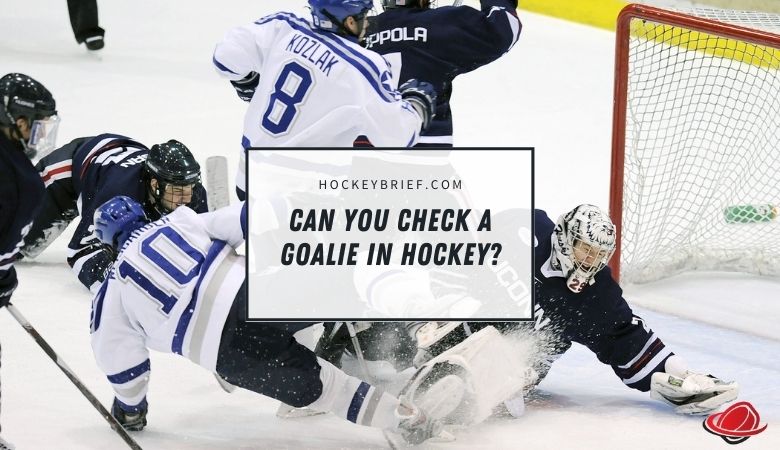As you know, ice hockey is a rough sport, and body checking is a huge part of the game.
Although body checking between players is quite common, you will notice that the goaltender is rarely touched.
Keep reading to find out the official rules regarding checking a goalie in hockey.
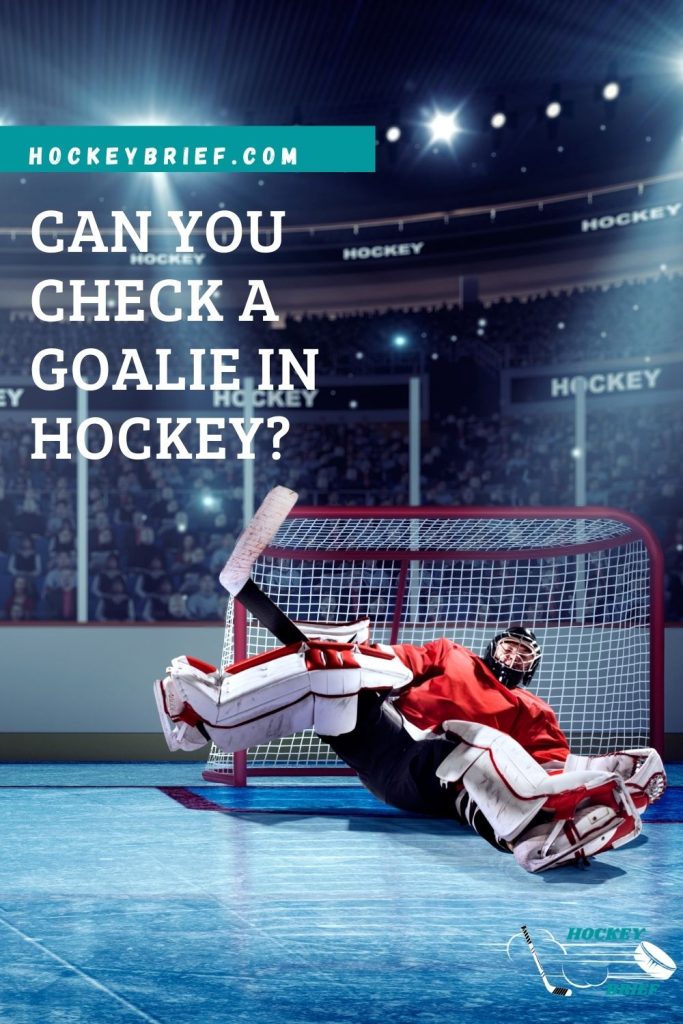
Can you check a goalie in hockey?
The rules of ice hockey are to be followed by all players during the game. This includes forwards, defencemen, and goalies.
Hockey is a contact sport and there will be body checking throughout the game unless you are playing in a league that doesn’t allow it.
Body checking is used by forwards and defensemen and does not include the goalie.
With respect to the rules of body checking, the goalie is off-limits.
You can not check the goalie. The rule is in place to protect the goalie and prevent injuries as the goalie is slower moving and more vulnerable to body contact from other players.
Goaltenders are also focused on stopping the puck and not so much concerned with a body check from another player.
Not being prepared for a hit can also lead to injury and it is known by all players on the ice that the goalie is off-limits with respect to body contact.
You will often see the goaltender play the puck outside of the crease. This does not allow for body contact with the goalie. The rules are the same regardless of the goalie is in the crease or not.
According to the NHL rule book section 69.2, it states the following:
“In all cases in which an attacking player initiates intentional or deliberate contact with a goalkeeper, whether or not the goalkeeper is inside or outside the goal crease, and whether or not a goal is scored, the attacking player will receive a penalty (minor or major, as the Referee deems appropriate)”
Goalie being hit into the goal net by opposing team:

What is body checking in hockey?
The purpose of body checking another player in hockey is to gain possession of the puck.
Body checking is a very effective way to knock your opponent off the puck giving you the chance to take it away.
Penalties for hitting the goalie
Any time a player makes contact with a goalie it will be called a penalty by the referee.
Depending on the severity of the hit, the referee will decide what type of penalty to call.
Normally a minor penalty which is 2 minutes in duration will be called. But a major 5-minute penalty or more can be also called.
It’s also possible for an interference minor penalty to be called in the event only light contact is made or you accidentally bump into the goalie.
This is quite common as players try to avoid the crease area and bump into the goalie causing interference which can prevent the goalie from stopping the puck.
Not only will a penalty be called on a player for body checking a goalie, but the players on the goalie’s team will go that extra mile to protect him or her.
Be prepared for a scrum involving pushing, shoving, and perhaps fighting to take place if you make contact with another team’s goalie.
It’s common for other penalties to be called for roughing and others after a scrum due to a player making contact with a goalie.
Interference penalty being called by the referee:
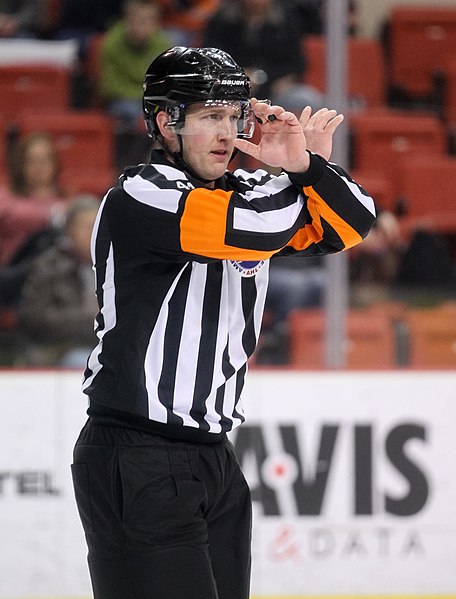
What is a trapezoid in hockey?
There are many times throughout the game where a goalie will leave the crease to play the puck.
There is an area of ice behind the net where the goalie is allowed to play the puck without receiving a penalty. This is the trapezoid.
Anytime a goalie plays the puck outside of the trapezoid, a penalty will be called.
Even though a goalie is playing the puck inside the trapezoid, it does not give permission to body-check the goalie.
When can a player check the goalie?
There is never a time during the game when a player can actually check a goalie.
There will be times when a goalie will play the puck along the boards behind the net which could result in an opposing player using their stick to take the puck from the goalie.
This often results in light bumping as the player is working hard to either steal the puck or beat the goalie to the puck behind the net.
It’s very rare for a player to actually make intentional contact with the goalie along the boards in the form of a body check.
Goalie playing the puck along the boards:
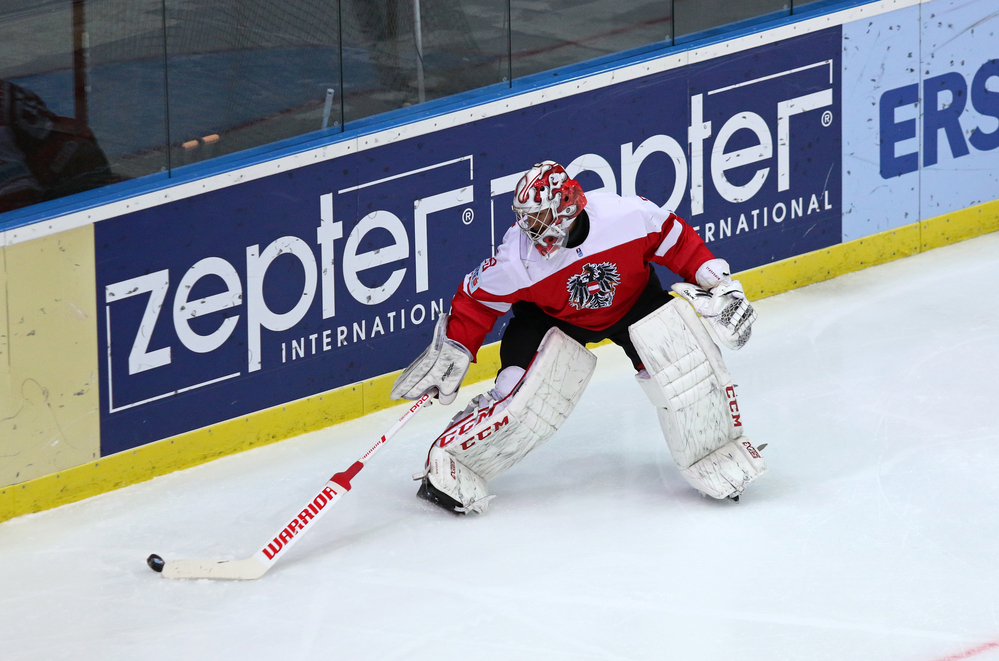
Can you poke the puck after the goalie covers it?
After a goalie makes a save or if the puck is sitting in the crease, the goalie will often try to catch or cover the puck to stop the play.
When this happens, the linesman will blow the whistle and play will be stopped. When the puck is not covered yet by the goalie, it can be poked at in an attempt to score a goal.
Once covered, if you attempt to poke at the puck after the whistle is blown, a penalty could be called and you will draw plenty of attention from the opposing team who won’t appreciate you poking at their goalie.
Technically play doesn’t stop until the referee or linesman blows the whistle, so if the goalie has attempted to cover the puck or the referee hasn’t blown the whistle fast enough, a player can still attempt to retrieve the puck.
But once the goalie has the puck covered up, you should not attempt to poke at the puck.
Goalie covering up the puck:
